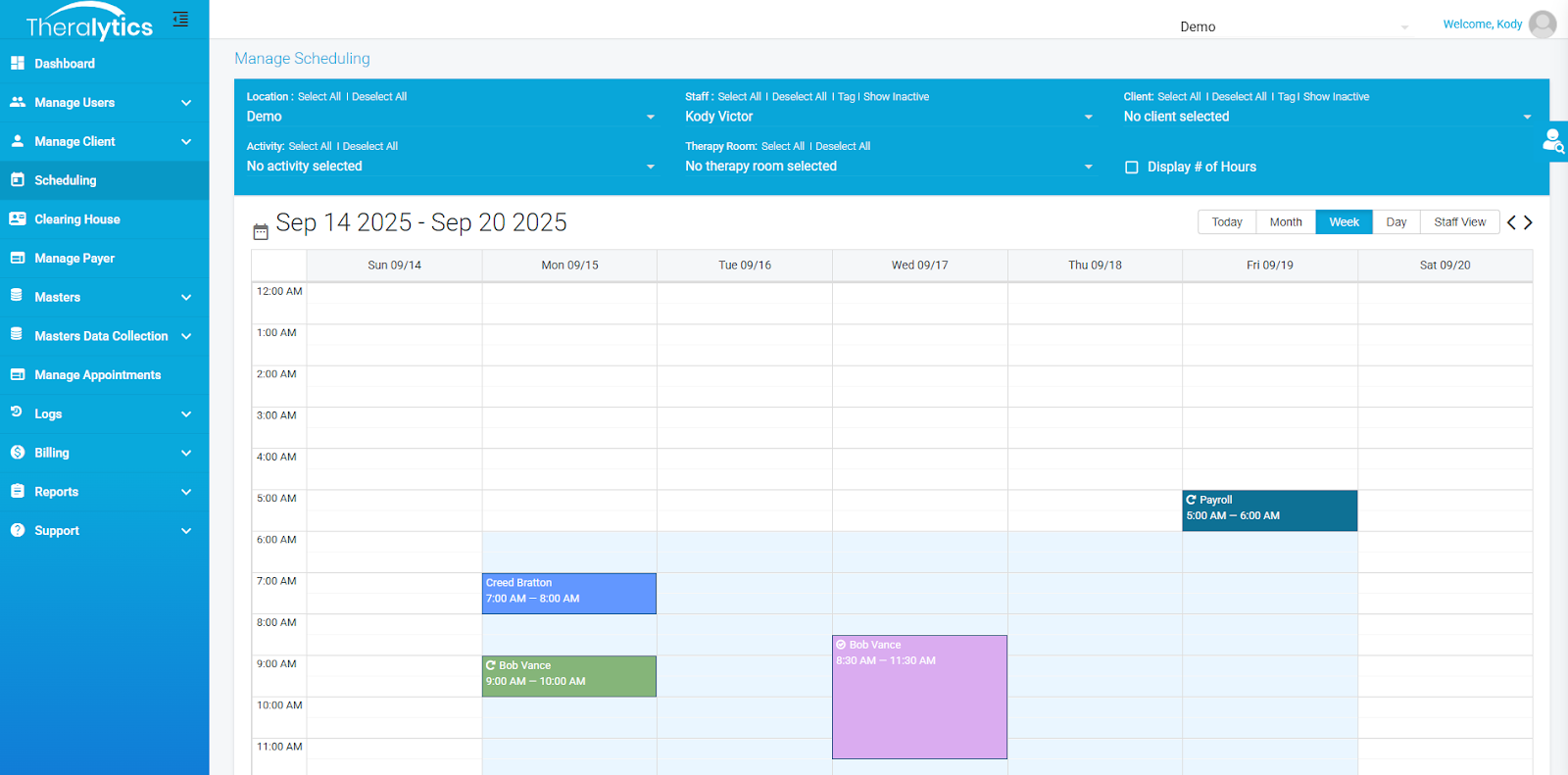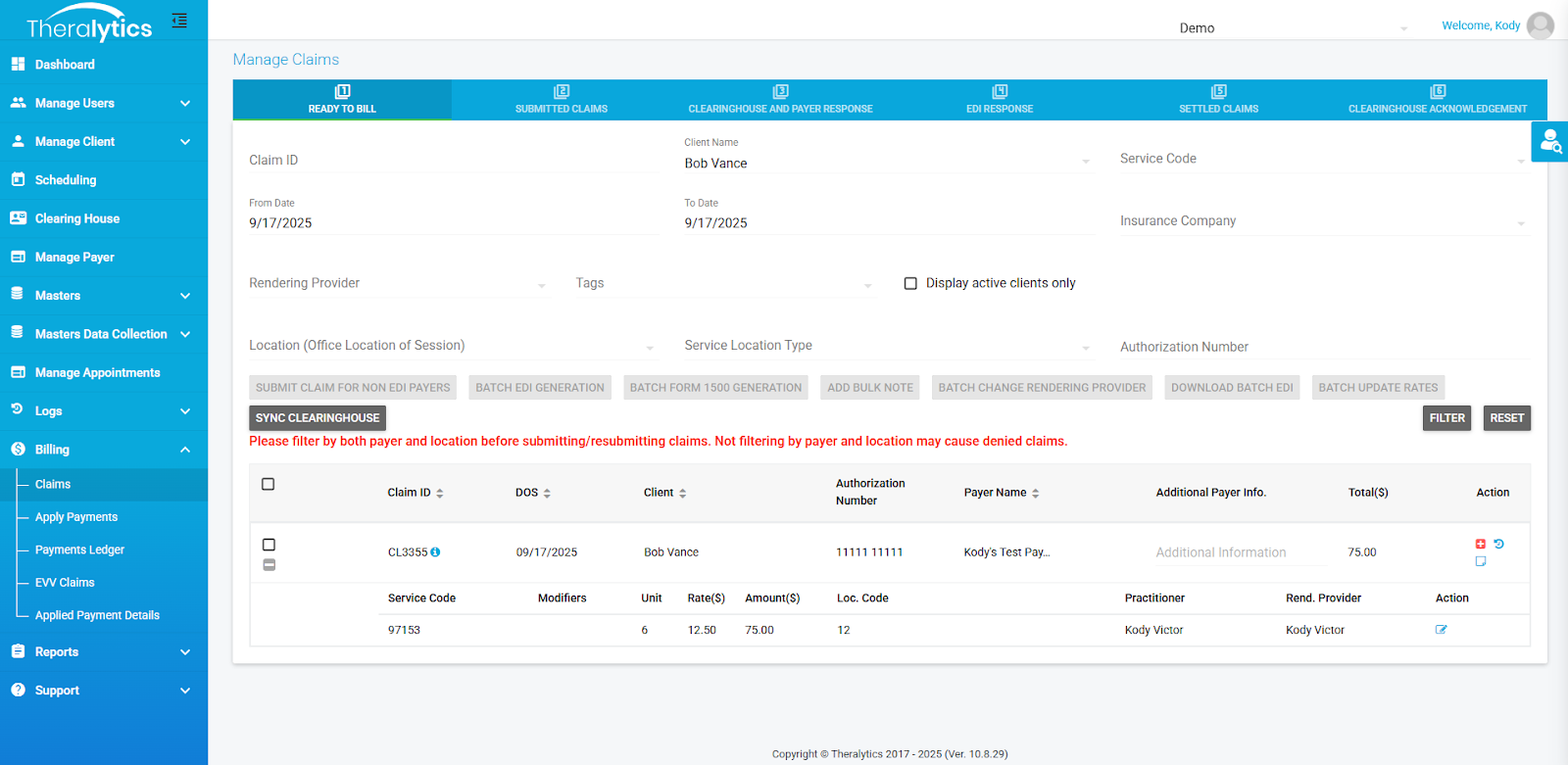Applied Behavior Analysis (ABA) therapy has become one of the most effective, evidence-based approaches for individuals with autism and related developmental needs. As awareness grows and insurance coverage expands, ABA therapy practice growth has accelerated nationwide.
For ABA therapy providers, this demand represents both an opportunity and a challenge. Many practices want to grow, expanding services, adding staff, or opening new locations, but growth requires intentional planning and operational discipline.
In this guide, we’ll explore the strategies ABA practices can use to scale successfully, from optimizing operations to leveraging technology and managing finances. Along the way, we’ll highlight how tools like Theralytics can support growth by streamlining management, reporting, and staff efficiency.
Understanding the ABA Market
The ABA industry is experiencing rapid change, shaped by several forces that directly impact ABA therapy practice growth:
- Rising demand: According to the CDC, autism prevalence has continued to rise, driving increased need for ABA services.
- Insurance coverage: All 50 U.S. states now mandate some level of ABA coverage, though requirements vary by payer and state.
- Awareness and advocacy: Parents, schools, and pediatricians are more aware of ABA, leading to greater referrals.
Opportunities: More families seeking care, expanding markets for telehealth and early intervention, insurance-backed reimbursement, and increased integration into school districts nationwide.
Challenges: Staff shortages (especially RBTs), high turnover, increasing payer scrutiny, and competitive local markets.
Understanding these dynamics helps practice leaders set realistic goals for growth in 2025 and beyond.
Operational Strategies for Sustainable ABA Therapy Practice Growth
A scalable practice starts with solid operations. Growth efforts often fail not because of lack of demand, but because the practice can’t manage increased complexity.
Streamline Workflows
- Automate intake and onboarding to reduce administrative bottlenecks.
- Standardize documentation and reporting expectations to improve compliance.
- Use scheduling templates that balance staff efficiency with client needs.
Manage Staff Effectively
- Develop structured onboarding and training programs for new RBTs and BCBAs.
- Create mentorship systems to improve retention and career development.
- Monitor workloads to prevent burnout and turnover.
- Creating systems to match qualified staff to the individuals on their caseload
Scheduling & Resource Allocation
- Use cluster scheduling to reduce travel time.
- Track utilization (billable vs. non-billable hours) for each role.
- Maintain waitlists and backfill systems to reduce missed capacity.
How Theralytics Helps: Theralytics simplifies operational management with flexible scheduling, billing integration, and analytics dashboards. Practices can track utilization, monitor documentation, and gain insights into where resources are under- or over-used, all critical for efficient ABA therapy practice growth.

Expanding Services and Locations
Growth often comes from broadening how and where you serve clients.
- New service lines: Add telehealth sessions, parent training, or early intervention programs.
- New locations: Expand into areas with unmet demand, ideally after analyzing referral sources, demographics, and competition.
- Strategic approach: Avoid spreading too thin, focus on one service or one new clinic at a time and ensure operational stability before the next expansion.
Financial Planning and Sustainability
ABA therapy practice growth depends on financial discipline.
- Budgeting: Plan for new hires, office leases, training, and marketing before expansion.
- Billing & reimbursement: Stay current with payer requirements to maximize first-pass claim acceptance.
- Cash flow planning: Keep reserves for 3–6 months of operating costs to weather payer delays or seasonal dips.

Using Technology to Drive ABA Therapy Practice Growth
Technology is no longer optional for ABA practices aiming to grow.
- Practice management software: Streamlines scheduling, billing, and documentation.
- Reporting & analytics: Helps leadership spot inefficiencies and make data-driven decisions.
- Mobile tools: Allow staff to document in real time, reducing lag and improving compliance.
Theralytics in Action: By offering location-based scheduling, real-time data collection, and flexible billing, Theralytics helps practices scale without drowning in administrative work. Its analytics give leaders a clear view of utilization, cash flow, and growth opportunities.

Marketing and Client Acquisition
Even the most efficient practice needs a steady stream of clients to grow.
- Local marketing: Build awareness in your community with workshops, flyers, and school outreach.
- Referral partnerships: Strengthen ties with pediatricians, speech therapists, and schools.
- Online presence: Maintain an updated website, invest in SEO, and encourage positive reviews from families.
- Social media: Share educational content and practice updates to build trust and visibility.
Overcoming Common Challenges
Growth comes with hurdles, here’s how to anticipate and address them:
- Staff shortages: Build strong pipelines with local universities, offer RBT training, and emphasize retention strategies.
- Competition: Differentiate by highlighting quality of care, family support, and operational excellence.
- Regulatory compliance: Stay current with BACB guidelines, payer policies, and state Medicaid requirements.
Case Study: Scaling Through Operations + Technology
Consider a mid-sized ABA clinic serving 100 families. As referrals grew, leaders faced increased staff burnout, missed sessions, and delayed billing.
By implementing standardized scheduling templates, adopting Theralytics for documentation and reporting, and setting clear financial KPIs, the clinic:
- Increased billable utilization by 12% in six months.
- Reduced documentation lag from 48 hours to under 12 hours.
- Improved cash flow with a 94% first-pass claim acceptance rate.
The result: sustainable ABA therapy practice growth with capacity to serve 30 more families without compromising quality.

Conclusion
ABA therapy practice growth in 2025 is achievable with the right balance of strategy, discipline, and technology. The most successful practices will:
- Strengthen operations and staff management.
- Expand services and locations strategically.
- Build solid financial foundations.
- Leverage technology like Theralytics to streamline workflows and gain insights.
- Invest in marketing and community partnerships.
Now is the time to assess your current operations, set measurable goals, and implement the strategies outlined here. With the right plan and tools, your ABA practice can grow sustainably, improving both business outcomes and client care.






.avif)
















